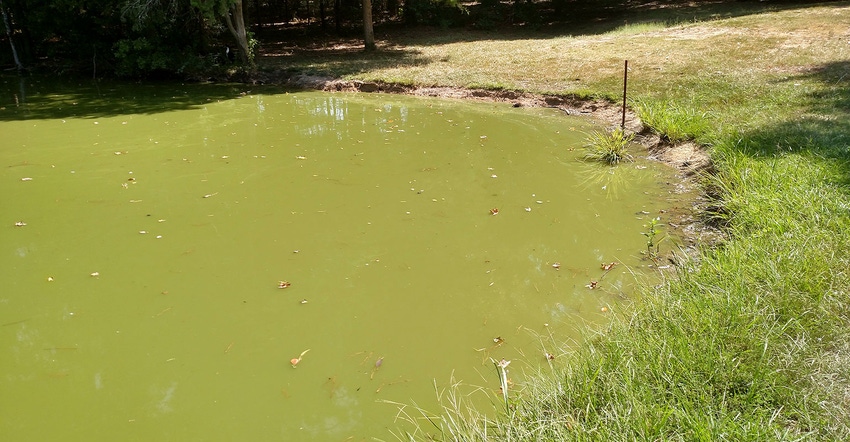August 1, 2019

During the hot summer months, farm pond owners often face the frustrating prospect of losing some of their fish population to oxygen depletion in the water, says Larry W. Dorman, Extension aquaculture specialist at the University of Arkansas at Pine Bluff (UAPB). The event – referred to as a “turnover” – is a phenomenon that is largely unavoidable.
Pond turnovers result in an all-too-common scenario around this time of year, he said. After an evening thunderstorm blows in with strong wind and heavy rains, a landowner might go check on his pond the next morning only to find all the fish are dead. The sight often leaves farmers baffled as to what occurred.
“Pond turnovers are a result of changes in water properties,” Dorman said. “In the spring, the water in a farm pond is cool and mixed, with a uniform temperature from the surface to the bottom of the pond. As spring turns to summer, surface water temperatures warm rapidly and the water density decreases.”
In the summer, breezes are generally light and do not mix the pond’s water from top to bottom, he said. The process of pond stratification occurs when water temperatures vary at different depths. The surface of the water is near 90 degrees, while the temperature at the bottom could be 20 degrees lower.
Oxygen levels
Additionally, due to the breakdown of organic materials in the pond, the oxygen levels in the cool, bottom layer of water may have decreased drastically, he said.
“Suddenly an afternoon thunderstorm brings strong winds and heavy rains, causing enough force to mix a pond’s water from top to bottom,” Dorman said. “The cool, oxygen-deficient bottom layer is abruptly mixed with the surface layer, causing severe oxygen depletion throughout the pond. This commonly results in a pond full of dead fish.”
Dorman said pond turnovers cannot be prevented because it’s impossible to change the properties of water.
“After a turnover occurs, aeration of the water is key,” he said. “However, many farm pond owners do not have access to the type of aeration equipment used by catfish farmers. Small gasoline engine pumps or irrigation pumps can help some in emergency situations, but unless that equipment is close by, landowners are at a loss.”
Myths about solutions
Dorman said farm pond owners should beware of some commonly circulated myths about potential solutions for a pond turnover.
“Some pond owners have been told to run their boat and outboard motor around the pond for an hour or so,” he said. “This is a potentially dangerous practice that has led to drowning incidents in the past.”
Another myth is that farmers can use a bush hog or other rotary cutter attached to the back of their tractor to stir the water at the pond’s edge, he said. This is also a dangerous practice that does not successfully aerate pond water.
“Pond turnover is an inconvenient occurrence that comes with raising fish,” Dorman said. “If a massive fish loss occurs due to a turnover, pond owners should restock the pond with small fish and start over.”
For questions concerning farm pond management, contact the UAPB Aquaculture/Fisheries Center at 870-575-8185.
About the Author(s)
You May Also Like




